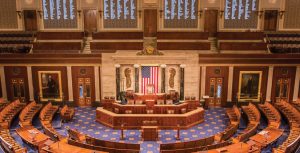 Last week, several U.S. House committees finalized their respective pieces of a $1.9 trillion federal pandemic relief package modeled on President Biden’s American Rescue Plan. These efforts are part of a wider “budget reconciliation” process that would allow Congressional lawmakers to advance this legislation with simple majorities in both chambers (i.e., the House and Senate.)
Last week, several U.S. House committees finalized their respective pieces of a $1.9 trillion federal pandemic relief package modeled on President Biden’s American Rescue Plan. These efforts are part of a wider “budget reconciliation” process that would allow Congressional lawmakers to advance this legislation with simple majorities in both chambers (i.e., the House and Senate.)
As part of this effort the House Education and Labor Committee last week approved nearly $128 billion in additional emergency aid for preK-12 education on a party line 27-21 vote. The Committee also released preliminary estimates regarding education funding in the proposed bill, including a state-by-state breakdown.
School leaders should take note that these funds (dubbed “ESSER III”) would be distributed via the existing Elementary and Secondary School Emergency Relief (ESSER) funding stream. All the existing allowable uses of funds and related requirements for the previous ESSER funding (i.e., “ESSER I” and “ESSER II”) would apply except that:
- States would be required to set-aside at least five percent of their ESSER allocation to support evidence-based interventions that address learning loss and
- School districts receiving funds would be required to use at least 20 percent of their local allocation for similar activities to address student learning loss.
Unlike the treatment of “ESSER II” funds, the new relief package would revert back to the “ESSER I” model regarding sharing resources with nonpublic schools via “equitable services.” The “ESSER III” allotment would be subject to equitable services as there is no separate allotment for private schools.
Significantly, the package would also require states and local school districts to adhere to both a Maintenance of Equity and a Maintenance of Effort provision—requirements that, respectively, would compel states and districts: a) to maintain previous spending levels and b) to prevent additional reductions of funding to fall on districts serving students most in need—as a condition of receiving this funding.
In addition to the funding described above, the House Energy and Commerce Committee approved a measure that would provide an additional $7.0 billion in funding to the E-rate program for broadband expansion aimed at expanding internet connectivity for students and teachers without adequate internet access. The proposal also directs the Federal Communications Commission (FCC) to develop rules allowing schools and libraries to use a portion of these funds to purchase connectivity equipment for off-school premises uses.
Finally, on February 12, the House Oversight Committee approved its component of the proposed reconciliation package which aims to provide nearly $350 billion in aid for State, Local, and Tribal governments. That proposal, if passed, would likely positively impact state K-12 education budgets as well.
In total, House committees of jurisdiction have now cleared nine separate legislative components that constitute President Biden’s American Rescue Plan. Having now assembled them into a single package, the House Budget Committee will hold a virtual markup session today (Monday, Feb. 22) to formally consider recommending the entire package for passage. The measure is expected to be approved by the Budget Committee and advance for consideration by the full House with a floor vote expected later this week or next week.
